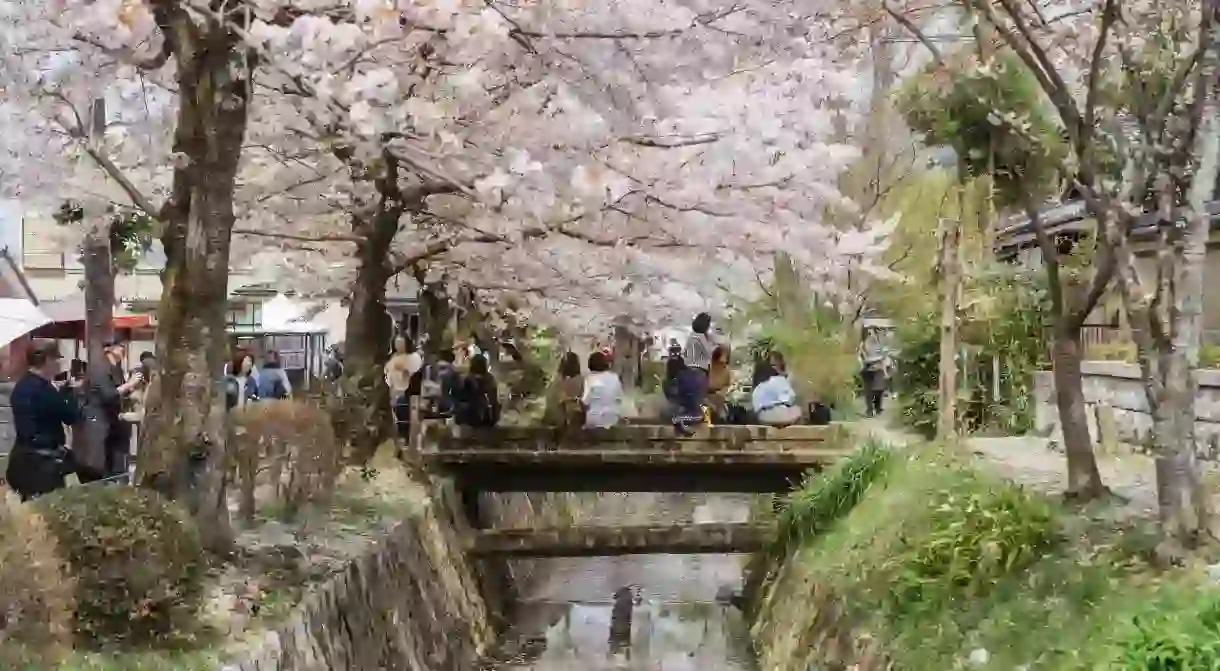The 12 Most Beautiful Places to Experience Nature in Kyoto

Kyoto has been a place of scenic natural beauty since ancient times with little changing over the centuries. There are countless places that both inspire and enchant visitors with their fairy-tale magic and out-of-this world experiences. Nature can be found everywhere in Kyoto, from the spectacular mountain scenery of Arashiyama and swaying bamboo grove of Sagano to the endless tunnel of torii shrine gates that wind up the mountain in Fushimi, to the breathtaking bay views and crystal clear waters of Ine-cho, known as “The Venice of Japan.” Here are some beautiful places in Kyoto to inspire your next visit.
Arashiyama
Natural Feature

The Sagano Bamboo Grove
Natural Feature

The Sagano Bamboo Grove in Arashiyama is considered one of the world’s most beautiful forests. The enchanting forest is famous for its natural beauty and distinct rustling sound from the bamboo swaying in the wind. The bamboo grove is popular with both Japanese and foreign visitors to Kyoto, with many people renting a traditional Japanese kimono to further enhance the experience. The bamboo grove is especially attractive when there is a bright blue sky and a light breeze with the bamboo gently swaying back and forth.
Fushimi Inari Shrine
Architectural Landmark, Historical Landmark

Uji
Architectural Landmark

Uji is a beautiful small city set in a green valley on the southern outskirts of Kyoto. The fast-flowing Uji River offers some spectacular views, with the area famous for its temples and green tea production. The spectacular Phoenix Hall at Byodo-in Temple in Uji. Nicknamed the “Temple of Flowers,” in spring, visitors can enjoy the beautiful gardens surrounding Mimuroto-ji Temple in Uji.
Ryoan-ji Temple
Buddhist Temple

Philosopher’s Walk
Philosopher’s Walk is a beautiful stone path that follows a cherry-tree lined canal in Kyoto between Ginkaku-ji (The Silver Pavilion) and Nanzen-ji. The path is a vivid green in summer and offers some pleasant relief from the heat of downtown Kyoto. Pink cherry blossoms line the path during spring in Japan, creating a truly spectacular experience.
Kyoto Botanical Gardens
The Kyoto Botanical Gardens is the oldest and most comprehensive public botanical garden in Japan. The ever-changing garden can be enjoyed all year round with seasonal plants and deciduous trees. It is the perfect place for a stroll in nature, a picnic, or cherry blossom viewing. Cacti in the glasshouse at Kyoto Botanical Gardens. Beautiful tulips during springtime at the Kyoto Botanical Gardens.
Ine-cho
Ine-cho was once a sleepy fishing village along Ine Bay in northern Kyoto Prefecture, but is now an off-the-beaten-track tourist destination that appears to be floating on the sea, giving it the nickname of the “Venice of Japan.” Traditional Japanese houses line the bay at Ine no Funaya, also known as “Kyoto by the Sea.”
Shugakuin Imperial Palace
Located on a hill to the northeast of Kyoto city, Shugakuin Imperial Palace is likely the most picturesque of Kyoto’s many imperial residences. From its vantage point it overlooks the city. Built along the natural incline of a hill, the palace’s beautiful grounds are full of maple trees that turn red in the autumn, along with many other trees in the surroundings. You can only enter the palace and gardens on a guided tour, so check their website for more information regarding the tours, as you need to make a reservation. Recommended by Elizabeth Lee.
Murin-an Villa
One of Kyoto’s best-kept secrets, Murin-an Villa is a gorgeous garden perfect for strolling and admiring the landscape. The villa of 19th century Japanese Prime Minister Aritomo Yamagata, Murin-an Villa also uses shakkei to borrow the Higashiyama Hills as a background, and the streams, ponds and waterfalls in the garden are fed by Lake Biwa, Japan’s largest lake. This Japanese garden has Western elements to it, such as the open lawn in front of the villa. This hidden garden is located at the end of a narrow alleyway, near the Kyoto Municipal Zoo. Recommended by Elizabeth Lee.
Saiho-ji Temple
This secret garden is one of the loveliest in Japan, offering an escape from the hustle and bustle of the metropolis. The grounds of the Zen Buddhist Saiho-ji Temple, a UNESCO World Heritage Site, are famous for the moss garden. Over a hundred species of moss grow in the garden, covering the rocks, ground and even some other plants, giving the garden a magical atmosphere. This is one of Kyoto’s most tranquil gardens, and you must book months in advance to enter. Recommended by Elizabeth Lee.
Haradani-en Garden
One of the best places to see cherry blossoms in Kyoto, Haradani-en Garden is famous for its shidare sakura trees, also called ‘weeping cherry blossoms’ as the flowers hang downwards from the branches. This 13,000m2, privately owned garden is located on the steep Okitayama Hills. You can spend a day there, as many Japanese families and couples do, picnicking, taking photos, and simply enjoying the spring, one of the most beautiful seasons in Kyoto. If you happen to be visiting outside of cherry blossom season, the garden has many other trees and plants, that make it a great place to be close to nature. Recommended by Elizabeth Lee.













